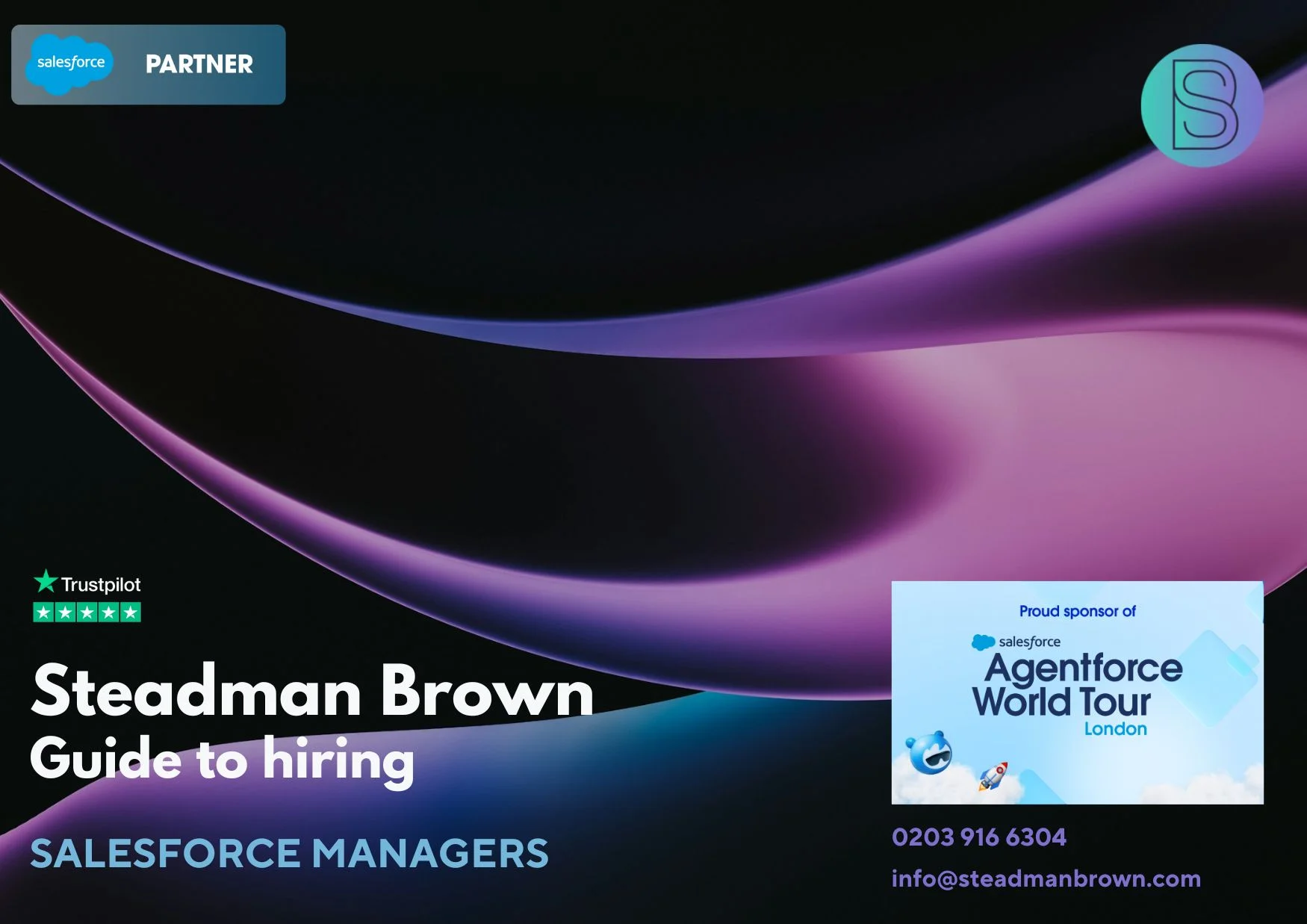
The technical test is a common Salesforce interview practice. It refers to the completion of a technical challenge relative to the Salesforce role your candidate's applying for. The tech test aims to help candidates demonstrate their skills through situational tasks you may encounter on the job. If you’re hiring Salesforce talent, there are multiple benefits to the Tech test, and if used correctly, they’re a powerful means of qualifying your candidates. Our blog aims to underline these benefits, ensuring our clients use them to their interviewing advantage.
When to bring out the Tech Test:
When used correctly, the Technical Test is a key qualifier for choosing the right Salesforce Candidate. They are most beneficial in Salesforce roles that require knowledge of the technology behind the different processes and their unique outcomes. In most Salesforce roles, for example, Administrators or Consultants, there are often multiple means of achieving the same goal; The tech test highlights best practice and separates the most efficient candidates who complement your desired working style.
The test is most commonly used in smaller Salesforce consultancies, over end-users or bigger consultancies. They’re used typically during interviews for Salesforce Administrators, Developers, and Architects. Mid-Senior level consultants, functional and technical, always require some form of presentation or technical test during their interview stages. This doesn’t have to be labelled a tech test specifically, just the testing of a real-life scenario. to determine if the candidate could do the job. For a Salesforce Developer, their test may include reviewing existing code to discover hidden bugs/bad code, reworking declarative automations into custom-coded solutions, and so on.
We recommend the test alongside the more classic, Q&A style. With a purely Q&A based interview, you sometimes risk being told what you want to hear, which sounds great at the time but the knowledge may not translate into real company scenarios. Utilising both methods helps you gain a well-rounded opinion of how your candidate is in general, as well as insight into how they would perform on the job. Structurally, the Q&A technique should go first, as this allows you to start the interview on a personal level and gather excitement about your opportunity. Putting the technical test as the first stage poses risk to the way your candidate may view your company. It can appear transactional, you threaten losing the candidate's interest, or, worse case scenario, you make them feel used for completing one of your tasks. With an initial Q&A it allows the candidate to go into their technical test feeling excited about the prospect of doing similar work in their new job!
Should the Technical Test be a real-life company scenario?
This should be as close to a real-life scenario as possible, but not exact. Completing a test that could occur in their day-to-day, gets the candidate excited about the potential work they may be doing for you. Also, if your test is based on a product you don't use, or something completely separate from the interviewee's role, the skills they demonstrate cannot determine if they’re a good fit. That being said, this test does still need to be far enough away from real life company events. For instance, use of actual company data is a big no for the technical test. Whilst it may be tempting to see how your candidate interacts with company data, this is a big breach of GDPR and poses a huge security risk. Furthermore, working with company data risks the candidate feeling like they’re completing an actual piece of your work and essentially, like the interview has become free labour! The tech test should therefore be related, i.e. relative to your industry or products, but not for the benefit of real life solutions within your company.
How to grade the test:
The beauty of the technical test for both candidate and interviewer is that the whole process contributes to the correctness of the interview answers. Which means, the grading of a tech test isn’t solely based on your final answer; it's more how you go about finding it. How exactly do you extract your requirement? Understand it and then deliver it? A candidate could, for instance, have a perfect process, filled with best practice, but their final answer is incorrect. It means as an interviewer, you get to analyse if the way this person works is what you want to see in your company, rather than dismissing them instantly on wrong answers. This is also why it works perfectly alongside the Q&A, as forgotten knowledge down to initial nerves, has a chance to be redeemed.
Monitor, but don't police!
Monitoring the Technical Test should always be in play, but if monitored too closely, the candidate may feel like they’re being micromanaged before they’ve even begun working at your company. In our opinion, tech tests should allow candidates to thrive autonomously to demonstrate exactly why they should be hired, and this comes from stepping back and allowing them to shine. That being said, with too little monitoring you don’t want to allow an environment that risks cheating, which in the long term benefits nobody! So overall, make sure you monitor your technical tests, but never police!
To Conclude:
A Salesforce Technical Test is a perfect way to qualify the right hire for your Salesforce job. Used strategically alongside the classic Q&A interview style, you are able to paint the best picture of your candidate, both of their skillset and personality, in the short time the interview process gives. The technical test focuses on the process over the outcome, highlighting key skills which may not be translated through on the spot answers or tickboxes, and should be a key part of your Salesforce hiring process!



